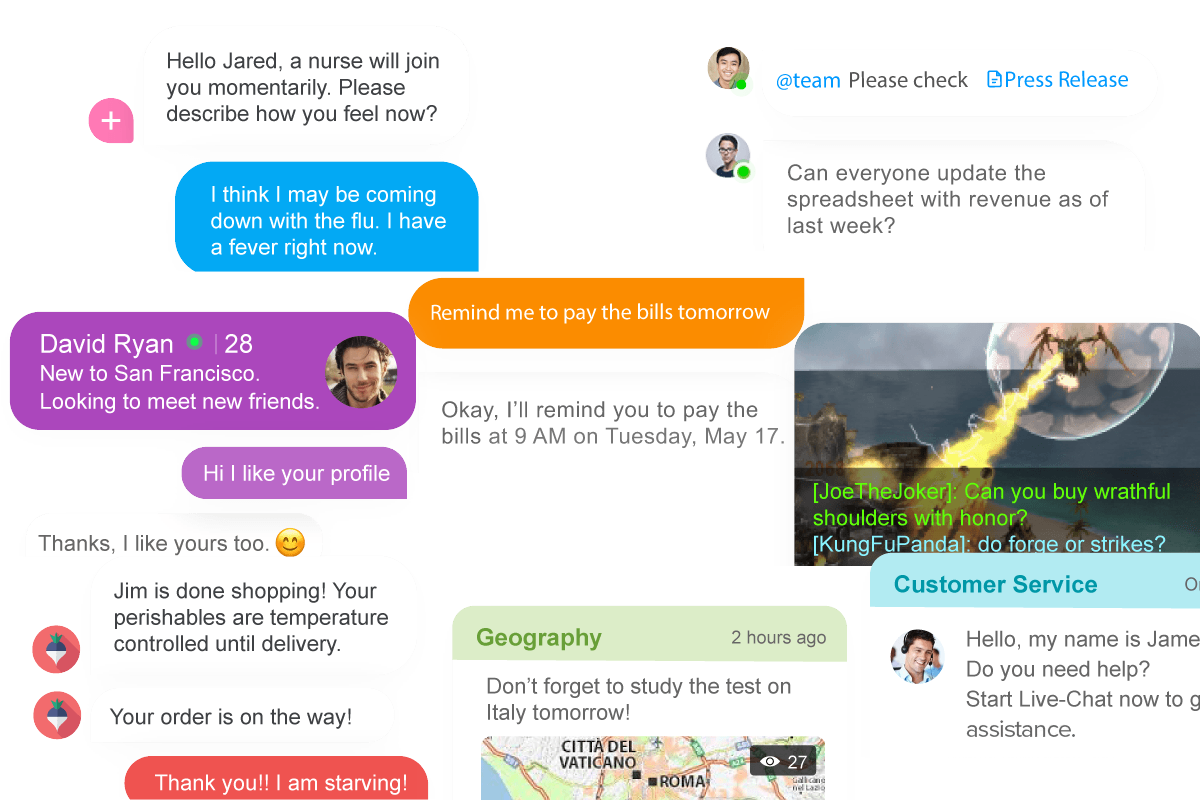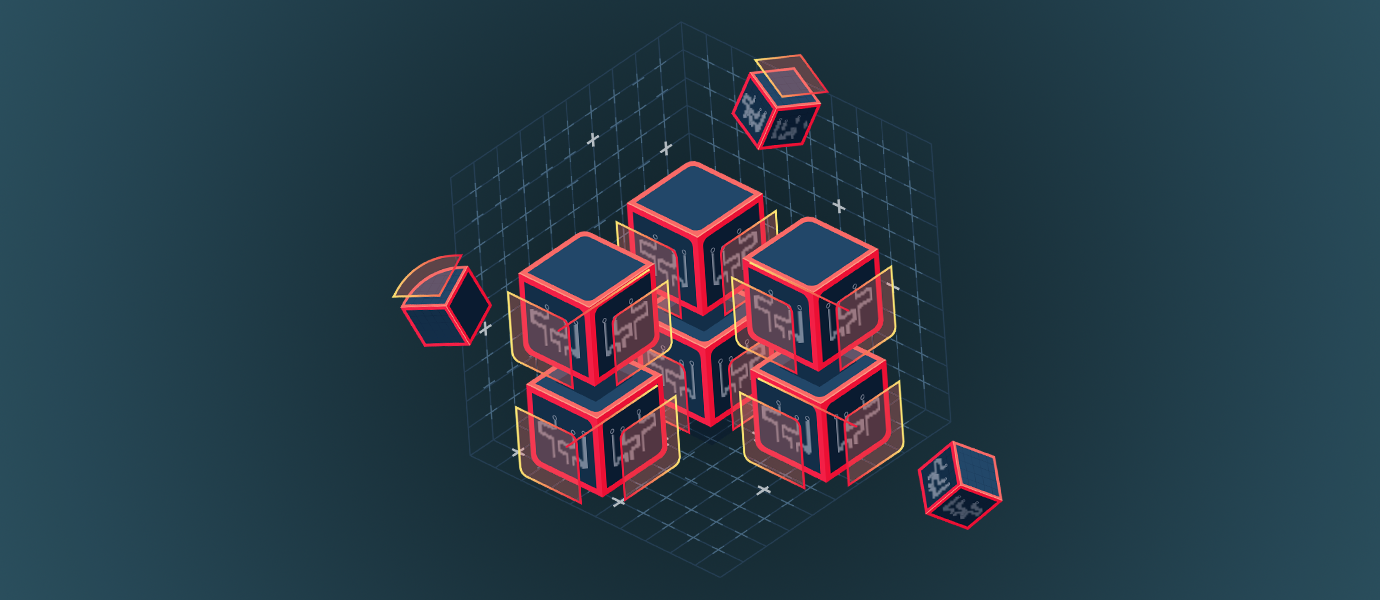IN THIS ARTICLE
Subscribe to Our Newsletter
Plummeting data costs, smartphone accessibility, and consumer trends = chat, chat and more chat. But it won’t be easy.
Across the Big Four of mobile messaging - Messenger, WeChat, Viber, and WhatsApp - there are 4.1 billion users who sent 72 trillion chat messages in 2018, and number that continues to grow year over year. The world is using more messaging services, for more time, across more and more use cases.
Collaboration software - Slack, Microsoft Teams, and other CPaaSs - spending is estimated to hit $45B by year’s end, with the biggest area of growth being team chat applications, expected to rise 60%. Phone support is being replaced by chat customer service channels (and more recently, chatbot-driven). And 68% of consumers say that messaging is the most convenient way to stay in touch with businesses. But it’s not just the increased reliance on software being built and bought that’s changing the landscape of chat. There’s another revolution taking place, and India’s the most notable example of it.
In 2018, there were 3.3 billion smartphones spread across the globe. The cost of a connected device (system on a chip with WiFi, cellular, and a CPU), has dropped from $20 in 2014 to $0.75 in 2018, and that price continues to drop. Internet connectivity has never been more affordable; for under $5, you get unlimited LTE in India, and the plan often times even comes with a free smartphone.
In a nutshell, people are online and they’re online everywhere. With always-on, ubiquitous, and affordable connectivity, combined with a powerful smartphone, in-app chat of all shapes and sizes is at their fingertips. And as a result, chat has become the primary form of communication across all industries and verticals, with no signs of slowing down.
With Great Adoption Comes Great Challenges
It’s safe to say the chat market is hot, and it extends beyond end-user chat applications like WeChat, Slack, and Signal. It’s not just the chat apps themselves, but the technology behind them that’s introducing new disruptive players to the game, backed by heavy funding from VCs, which is apparent for instance, in the 57 startups that will boom in 2019, according to VCs.
With billions of users using chat applications for every walk of life - connecting, collaborating, customer service, artificial intelligence, the list goes on.

Guarantee Scale for Massive User Counts
Take that 4.1 billion users from the Big Four, and think about that kind of scale divided amongst the millions and millions of chat applications deployed today. For a good number of them, they’re dealing with a massive amount of users. And given that those users are relying on chat for increasingly data-intensive use cases, deploying and maintaining chat at massive scale is the primary challenge companies face for 2020.
Take HotStar, an Indian streaming service, who broke the global record for live viewership in an OTT video streaming app earlier this year. 18.6 million users simultaneously joined the application that included a live chat widget and a number of other interactive features.
The challenge comes in that what works in the lab, doesn’t always work in the wild. Chat applications deal with large fluctuations in concurrent users, various message sizes (chat messages, video, images, typing indicators, etc), global distribution of users, and unreliable and irregular network environments are the most prominent challenges in ensuring scale. The result is that building chat from open-source components and DIY infrastructure is hard, which is why companies are more and more turning to hosted-services to handle the complexities, handling the infrastructure to support “always-on” connectivity.
Strict Privacy and Compliance Regulations
 Data privacy, compliance, and regulations are some of the greatest challenges that companies are facing today. 2018 was all about GDPR. Come the new year, the CCPA becomes effective in California. Healthcare companies in the United States face an increasingly rigorous HIPAA-compliance. And British Airlines just got hit with a €183M fine for a GDPR violation. Revolutionary privacy regulation has come, and businesses must be aware of the current laws, future regulation, and privacy standards to sustain compliance.
Data privacy, compliance, and regulations are some of the greatest challenges that companies are facing today. 2018 was all about GDPR. Come the new year, the CCPA becomes effective in California. Healthcare companies in the United States face an increasingly rigorous HIPAA-compliance. And British Airlines just got hit with a €183M fine for a GDPR violation. Revolutionary privacy regulation has come, and businesses must be aware of the current laws, future regulation, and privacy standards to sustain compliance.
With the increased reliance on messaging applications, from healthcare doctor/patient chat, to dating, to on-demand economy customer service, to financial, users are sharing more and more sensitive and personal data over these applications. Chat service providers must put security and compliance first, protecting user data with advanced measures beyond simple encryption and authorization.
This means reinforcing chat security beyond TLS with AES encryption for end-to-end message protection. This means fine-grained access control over ever user connected to a chat application, with the ability to identify and revoke access for bad actors. And this means checking the boxes of every major compliance necessary for the chat applications industry and the types of data being sent over the application, like HIPAA for healthcare and Privacy Shield for U.S.-E.U. data transmission.
Supporting 3rd Party Integrations
 Beyond core chat - user to user messaging, chatrooms, buddy lists, and emojis - chat is being increasingly used in more advanced and uniquely rich experiences. These are use cases like an intelligent shopping assistant bot helping a customer in an online store, a chat feed accompanying a live stream of a sports event, or group chat in an online eLearning environment, where simple messaging just doesn’t cut it.
Beyond core chat - user to user messaging, chatrooms, buddy lists, and emojis - chat is being increasingly used in more advanced and uniquely rich experiences. These are use cases like an intelligent shopping assistant bot helping a customer in an online store, a chat feed accompanying a live stream of a sports event, or group chat in an online eLearning environment, where simple messaging just doesn’t cut it.
That’s because to power those advanced chat app features - chatbots, content moderation and filtering, and language translation - chat services must embrace openness and the ability to integrate 3rd party services directly into the application. Just like choosing a hosted infrastructure or service rather than building it in-house, solving this challenge is based on implementing best-in-class third-party services rather than trying to build them in-house.
Take AI and machine learning services, say, a sentiment analysis service. It takes substantial engineering resources to create, maintain, and deploy a service that can gauge the emotion of a piece of text. It’s the team’s responsibility to train and hone the service to accurately and efficiently gauge sentiment, so why wouldn’t they utilize an existing service that lives and breathes that product? Teams having the freedom to choose and replace best-in-class 3rd party services to handle a wide variety of features and functions in an app puts chat service businesses a step ahead of the competition.
Looking Forward
Scale, security, and integrations are the three biggest challenges chat service providers and companies relying on chat will face. In a crowded, competitive market, building unique and innovative features, while iterating and getting to market quickly, will make or break businesses. Look for chat to continue to surge as a crucial part of applications across every industry and vertical, serving an ever-growing, data-intensive user base with massive expectations.
Speaking of which, we just launched PubNub Chat, a flexible set of SDKs built for companies who don’t want to choose between speed and flexibility when creating a chat experience. Check out PubNub Chat here.







